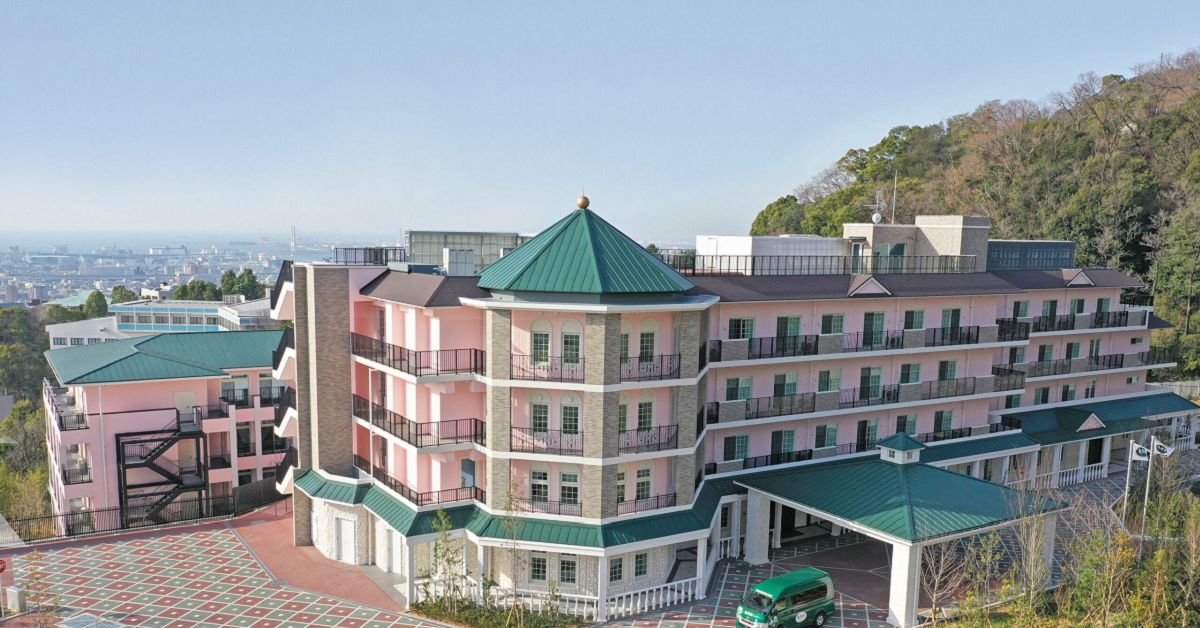In the final act of “Kokuho”, Shunsuke’s hospital room becomes a crossroad of life and art, a place where silence reveals the brilliance of human existence. Filmed at Kita Osaka Housenka Hospital, this powerful scene captures the beauty of stillness and the strength that lies within fragility, leaving an indelible mark on every viewer.
About Kita Osaka Housenka Hospital
Located in Osaka Prefecture, Kita Osaka Housenka Hospital is a modern medical facility that has become a sought-after filming location for movies and dramas. With its bright, sterile design and spacious corridors, it provides a setting that is both realistic and cinematic. In “Kokuho,” the hospital serves as the final stage of Shunsuke’s life, with scenes filmed in actual hospital rooms, hallways, and nurse stations.
The sterile air of the hospital mirrors the protagonist’s internal conflict, while the interplay of light and shadow highlights his solitude and silent acceptance. The natural lighting through the windows adds an ethereal quality, reflecting time’s slow passage and Shunsuke’s gradual reconciliation with his fate.
| Element | Description |
|---|---|
| Name | Kita Osaka Housenka Hospital |
| Location | Toyonaka area, Osaka Prefecture |
| Notable Feature | Modern, clean design ideal for film shoots |
| Filming Areas | Patient rooms, corridors, nurse stations, outdoor passages |
The Symbolism of Shunsuke’s Hospital Room
Shunsuke’s room represents more than just a medical setting—it embodies his life’s culmination. As an artist who once stood on dazzling stages, he now faces stillness and introspection. The room’s whiteness and silence become visual metaphors for life, art, and mortality. Every object—the bed, the window, the subdued light—tells a story of both decay and transcendence.
The director deliberately used natural light and minimal artificial illumination to retain authenticity. The gentle glow on Shunsuke’s face evokes both vulnerability and grace, while his every breath becomes a quiet expression of dignity.
The Emotional Power of the Final Scene
In the climactic scene, Shunsuke’s faint smile resonates as a powerful act of acceptance. It is neither resignation nor despair—it is peace after struggle. The carefully constructed silence of the hospital amplifies this moment. The muted beeping of medical devices, the still curtain, and the faint rustle of air create a profound sense of serenity.
| Visual Element | Symbolic Meaning |
|---|---|
| White interior | Contrast between death and rebirth |
| Soft natural light | Symbol of hope and tranquility |
| Muted medical sounds | Suggest continuation and eternity of life |
The director explained, “I wanted to depict strength within silence.” The hospital’s subdued atmosphere fulfilled this vision perfectly. Through Shunsuke’s quiet presence, the audience perceives not only the fragility of human life but also the eternal nature of artistic expression.
Why the Location Was Chosen
Kita Osaka Housenka Hospital was selected not only for its aesthetics but also for its architectural precision and control of natural light. The long corridors and geometric layout provided visual depth for cinematography, creating a sense of infinite space. The staff cooperated closely with the film crew, ensuring authenticity in every detail—from patient room arrangements to lighting direction.
The hospital’s calm, pristine environment mirrored the film’s central theme: the sanctity of human life. According to crew members, the collaboration with hospital personnel fostered a tranquil yet focused atmosphere on set, enhancing the emotional realism of the scenes.
In cinema, the right location can elevate a story from fiction to lived reality. The hospital’s harmony of modern architecture and human warmth gave the film an emotional foundation that words alone could not achieve.
The Lasting Impression on Visitors
After the film’s release, Kita Osaka Housenka Hospital became known as “the sacred site of Kokuho.” Though the hospital remains a functioning medical facility and is not open for tours, fans still visit to catch a glimpse of the exterior or stand where the story’s final moments took place.
Many viewers describe the hospital room’s quietness as unforgettable—its stillness conveys more emotion than any soundtrack. In that silence, every breath, every flicker of light becomes a prayer. The hospital’s real-life tranquility merges with the film’s spiritual world, leaving a lingering sense of reverence long after the credits roll.
Conclusion
The climactic scenes of “Kokuho” filmed at Kita Osaka Housenka Hospital embody the themes of life, love, and artistic transcendence. The hospital room functions as a symbolic bridge between the tangible and the spiritual, where reality and imagination converge.
This location is not merely a set—it is a living extension of the film’s message. The interplay of light, silence, and human expression transforms the ordinary into something sacred.
Even after the film’s end, the hospital continues to live within the hearts of viewers. Its corridors, windows, and rooms whisper the same truth that Shunsuke came to embrace—that art and life are inseparable, and beauty can be found even in stillness.






